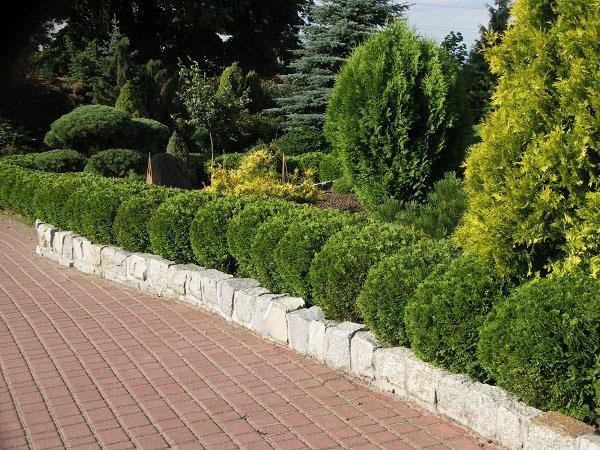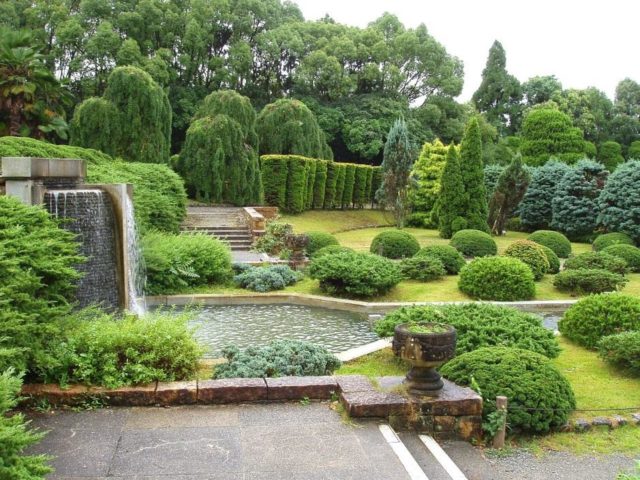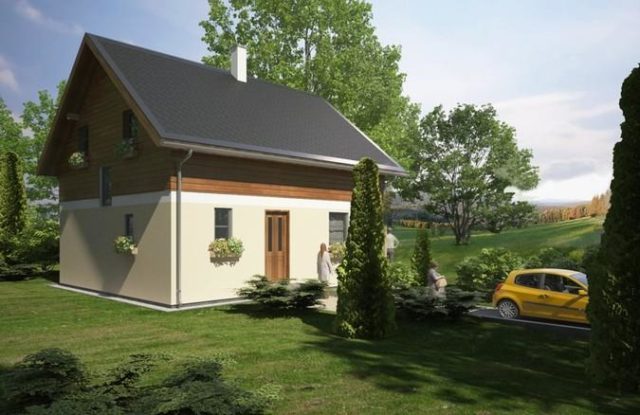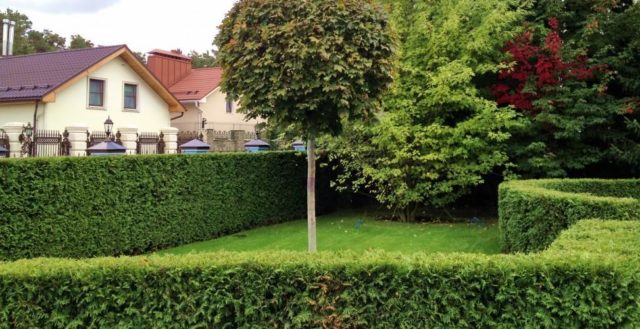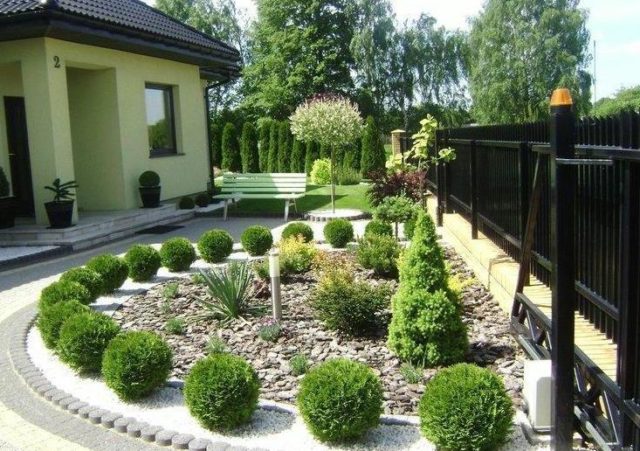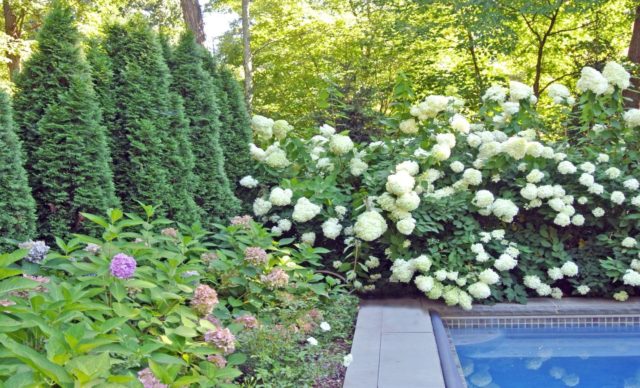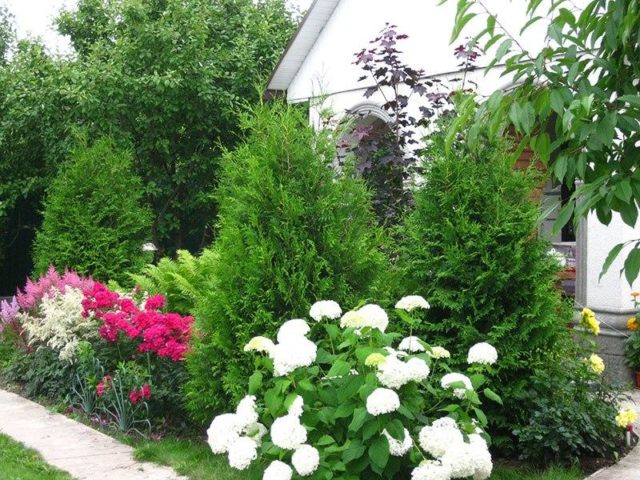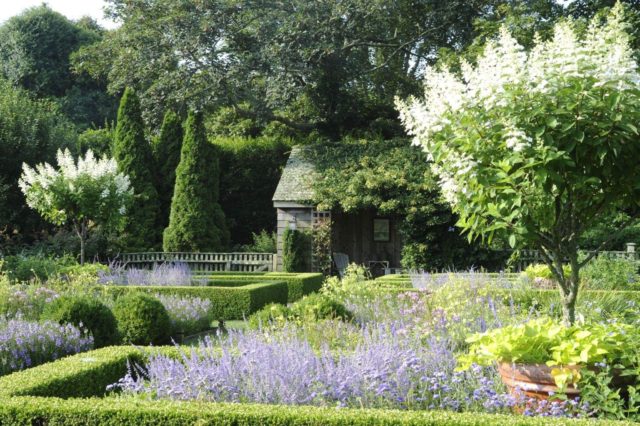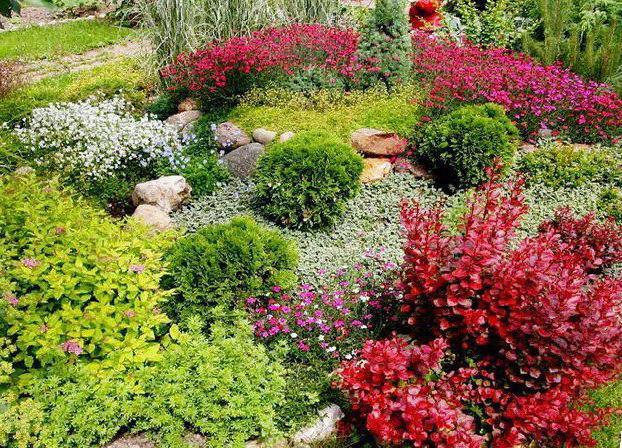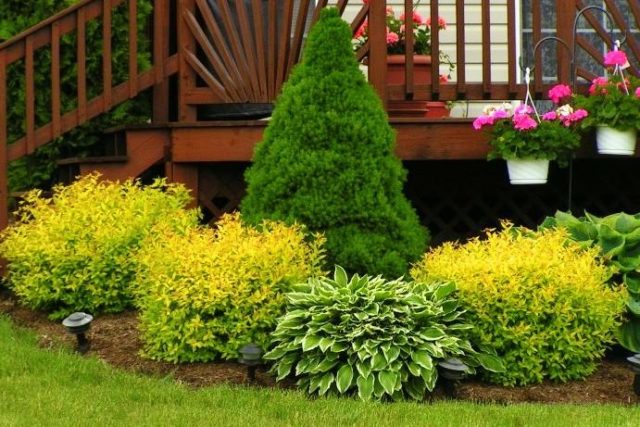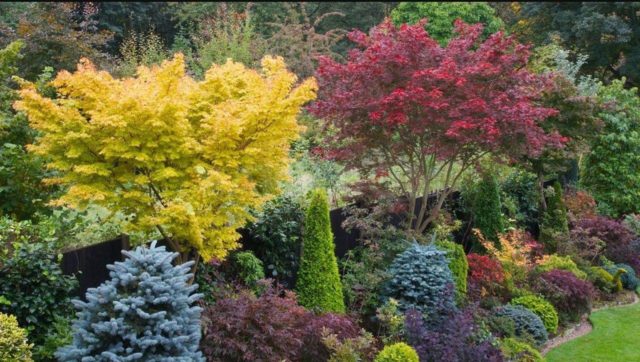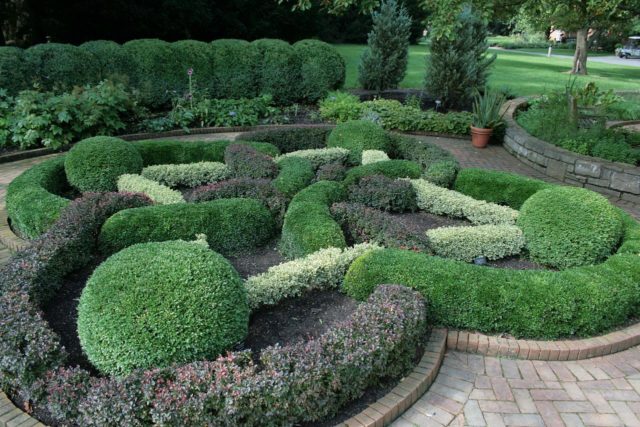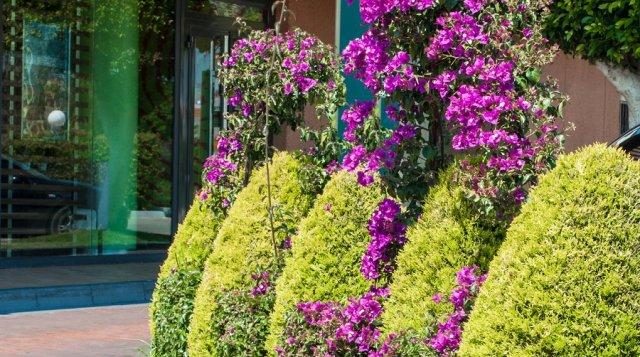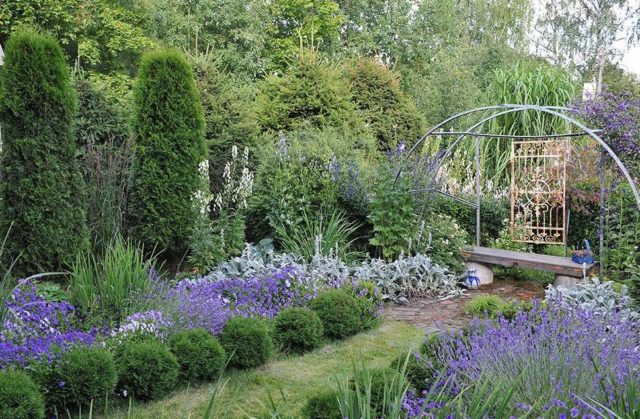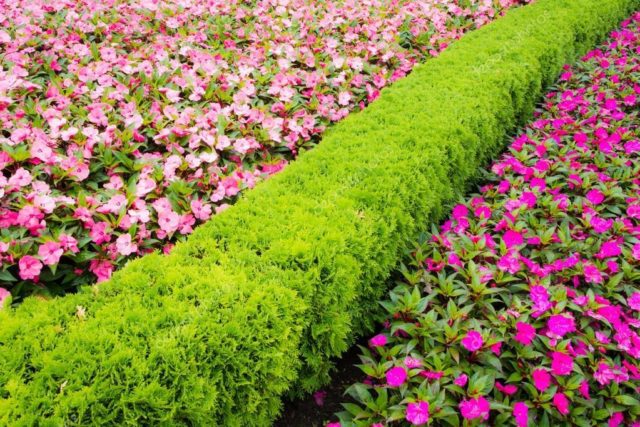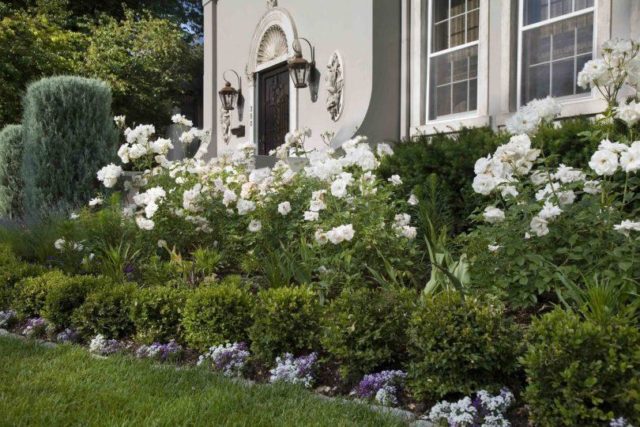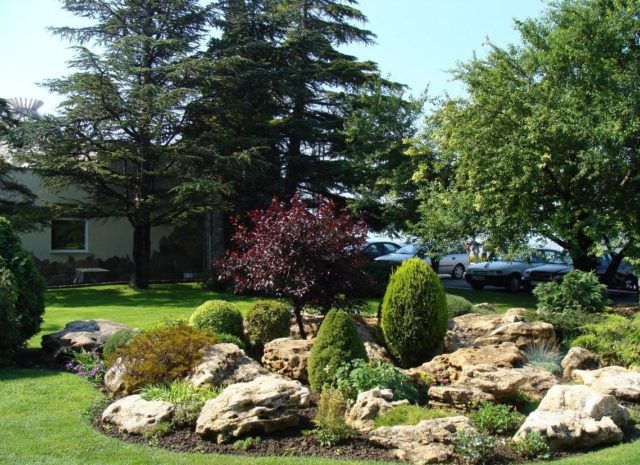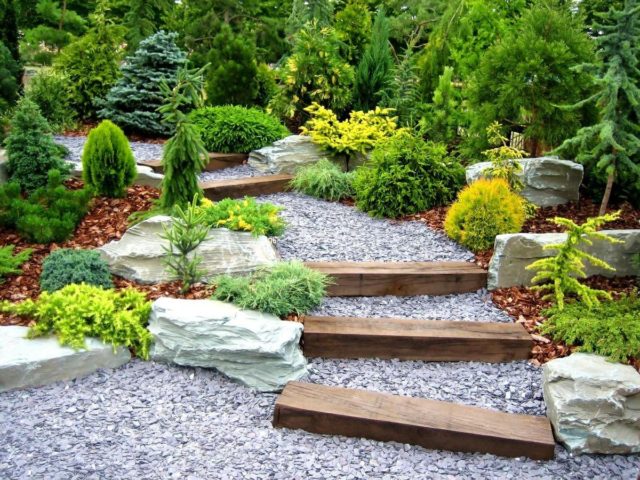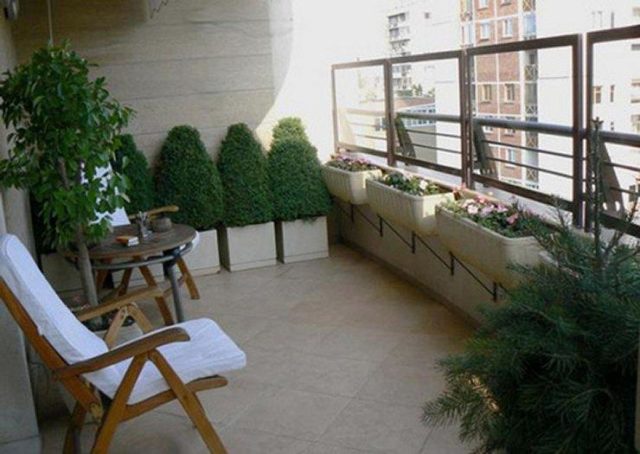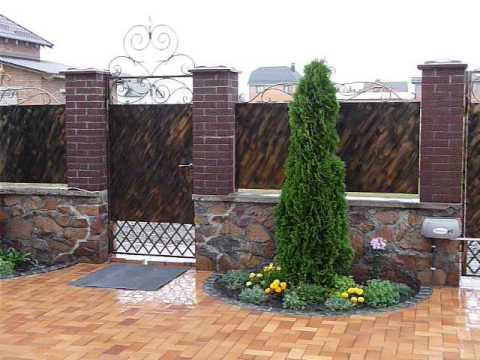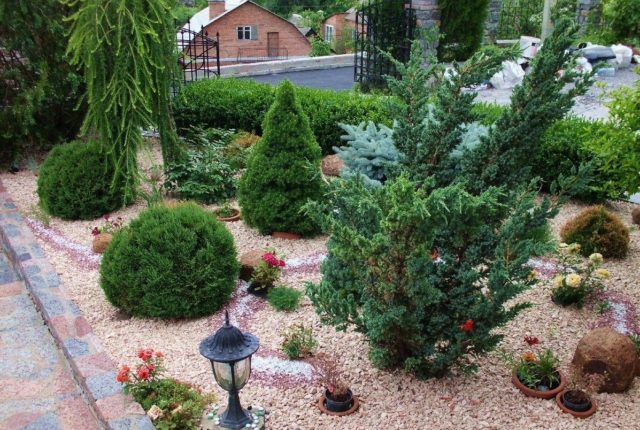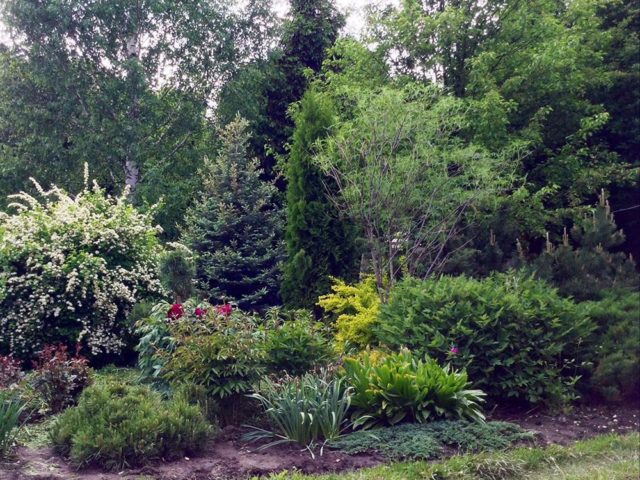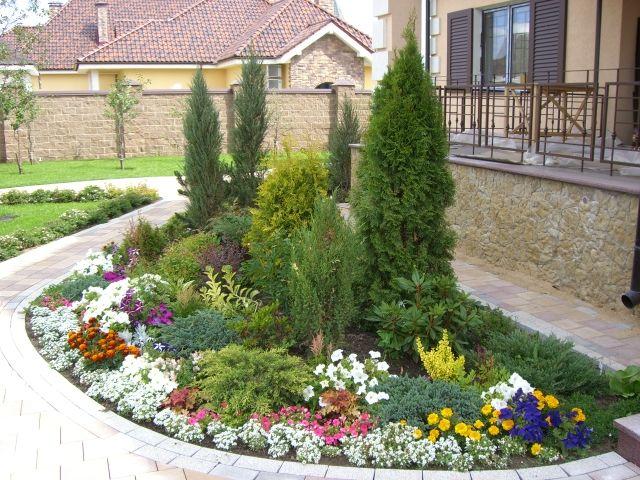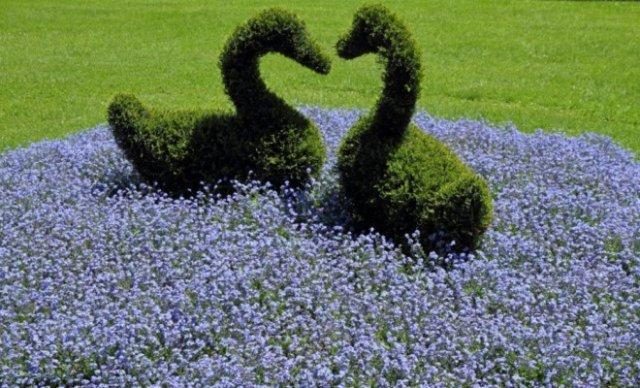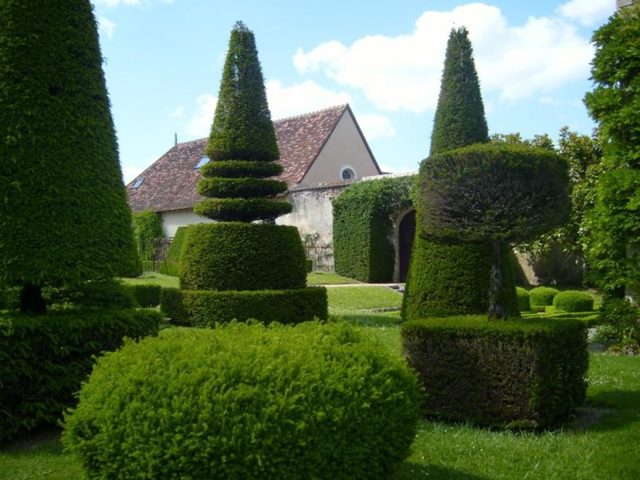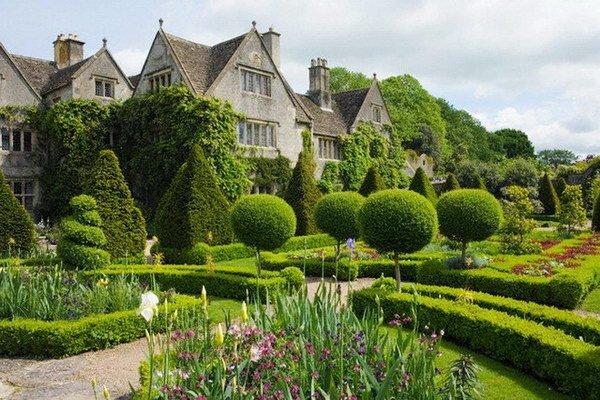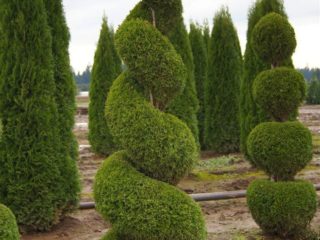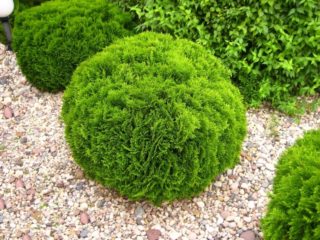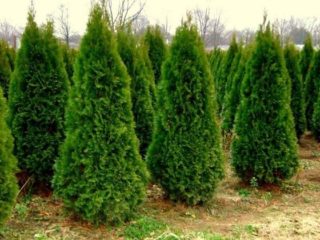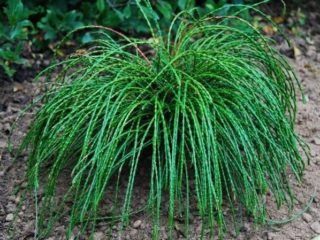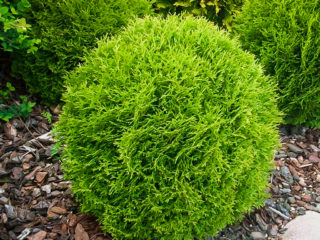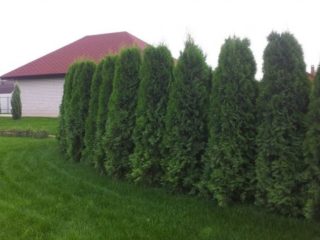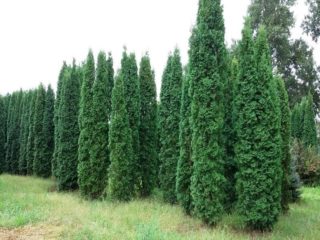Content
For many Europeans, thuja has long become a familiar representative of the flora, almost as common as spruce or pine. Meanwhile, its homeland is North America, and it has nothing to do with European plants. But this did not stop thuja from becoming one of the most popular crops in gardening. On the contrary, its unpretentiousness attracts even those plant connoisseurs who have no experience in cultivating conifers. The photos below of thuja in the landscape design of a summer cottage and tips for creating spectacular compositions will help plant growers find inspiration for decorating their local areas.
What is thuja combined with in landscape design?
Thuja is a favorite plant for landscape design for a reason. It is not only highly decorative, but also goes well with various garden crops.
The most obvious companion for the Western Thuja will be another Thuja. Moreover, it often does not matter which varieties of these conifers are adjacent to each other - they will grow successfully if there is enough space between the trees and the planting site is flooded with sun.
Being a tree from the Coniferous class, thuja occidentalis looks great in landscape design surrounded by related species, as you can see by looking at the photo below. The combination of thuja with other conifers is widely popular when landscaping an area, creating rockeries and flower beds that imitate forest flora. The advantage of this design is that its elements do not lose their decorative effect throughout the year and do not depend on the changing seasons. The main thing when selecting crops for planting is to focus on species that grow in soils with approximately the same acidity level. Otherwise, too high or too low a pH will inhibit their development.
Landscape compositions in which the beauty of thuja is emphasized by deciduous crops are very impressive. Such combinations look the most luxurious from a design point of view and give more scope to the gardener’s imagination. However, you should be careful when combining dissimilar plants, since the risk of making a mistake with the color and stylistic solution in this case is much higher. In addition, due to biological characteristics, not all cultures are able to get along next to the thuja. For this reason, you should first carefully study all the nuances of cultivating the crop and only then apply the acquired knowledge in practice, carefully selecting companion plants for the thuja.
Landscape compositions with thujas depending on the type and variety
Due to the fact that thuja can organically fit into almost any design, it is used to create many landscape compositions, where it can equally well play a dominant role or complement a creative concept as a background.
Thus, thuja can become an original design solution for decorating the entrance area in the form of an alley, even in a small summer cottage, which is clearly visible in the photo. As a rule, tall varieties with a pyramidal or cone-shaped crown are used for this purpose, for example Brabant, Columna or Douglas Pyramidalis. In addition to its use in landscape design, in the territories of private houses, thuja is used in urban environments, lining pedestrian roads on both sides with it. It adds style and presence to offices, educational and health institutions, shops and cafes.
To divide a garden into functional zones or to mark the boundaries of summer cottages, parks and squares, hedges are often used. Depending on the requirements of landscape design, both low-growing varieties and taller thujas are chosen for them. Among the former, it is worth noting the varieties Globoza, Hoveya and Danika; of the latter, thuja Smaragd, Kristata, Holmstrup or Wagneri are suitable for hedges.
A thuja border of arbitrary or closed shape, respectively, will help outline the contour of garden paths or complete the landscape composition. Neat, sophisticated borders are obtained from low spherical varieties, such as Danica and Teddy Reingold.
Although single-element compositions with thujas can attract a lot of attention, the use of these plants in landscape design in combination with ornamental shrubs, trees and perennial flowers is no less interesting, since it requires not only a developed aesthetic taste, but also an idea of the compatibility of cultures.
The combination of thuja and hydrangea in landscape design
A perfect candidate for a companion plant for thuja in landscape design is the beautiful hydrangea. This perennial deciduous shrub or tree, 1.5 to 10 m high, wins hearts with its abundant flowering, which lasts from late spring to late autumn. Hydrangea paniculata looks especially impressive next to the thuja. The large corymbose inflorescences of this plant are colored in white, pink, lilac, crimson and even greenish tones and will add bright accents to any design solution with thujas. Rich in shades of hydrangea flowers, located between the columnar varieties of thuja Smaragd, Columna or Fastigiata, will create associations with a Mediterranean garden and somewhat refresh the dark shades of the crown of conifers. Thuja, in turn, thanks to the phytoncides released into the environment, will prevent the occurrence of diseases in hydrangea and reduce the risk of pest attack. When planting hydrangea next to thujas, it is worth providing it with space for growth of approximately 2 - 2.5 meters.
How does thuja combine with ornamental trees and shrubs?
In addition to hydrangea, other shrubs will make a worthy pair of thuja in landscape design:
- barberry;
- vesicular carp;
- rhododendron;
- derain;
- mock orange;
- weigela hybrida
- Japanese spirea;
- euonymus;
- Kuril tea;
- cherry laurel;
- magnolia;
- hibiscus.
An interesting effect can be achieved if you plant boxwood next to the thuja. Both of these plants tolerate pruning well, and therefore will look good together with formed crowns.
Small shrubs and herbaceous groundcovers will help hide areas of bare ground between thujas and other large landscaping elements. Among them, the following have proven themselves to be excellent:
- Erika;
- Dummer cotoneaster;
- bryozoan;
- saxifrage;
- thyme.
You should not plant thujas in close proximity to birch and bird cherry trees, as the ephedra will inhibit their development. In addition, such a neighborhood will not benefit fruit trees and shrubs, since they do not tolerate phytoncides, which are released in abundance by thujas.
What colors does thuja go with?
Perennial and annual flowers are also suitable for thuja as companion crops in landscape design, for example:
- alyssum;
- Drummond's phlox;
- subulate phlox;
- fragrant tobacco;
- lavender;
- primrose;
- lobelia;
- host;
- sedum;
- Iberis;
- periwinkle;
- Waller's touch-me-not;
- semi-shrub clematis;
- geranium;
- iris;
- petunia
- poppy;
- delphinium;
- bergenia;
- pansies.
Compositions of thujas and roses look very unusual in the landscape design of a site, especially if spherical conifers or trees with a compact crown are used. Despite the apparent incompatibility, it is quite possible to plant these plants together if you maintain a distance of 1.5 - 2 m between roses and thujas. This way, the root systems of the plants will not interfere with each other’s development.
But asters, dahlias and peonies will not be the best neighbors for thuja.
Features of the use of thuja in the landscape of a dacha, plot, garden
Most of the above-described compositions from thujas are applicable not only for landscaping parks and urban landscapes, but also for summer cottages. It all depends on the gardener’s imagination and sense of color. However, there are some features that are important to keep in mind for those who dream of decorating their home with thuja compositions.
- Don't be afraid to experiment. Thuja in landscape design at the dacha can be combined with plants of different types - medium-tall or short, grown in pots and growing in open ground.
- It is not recommended to plant a large number of tall thujas on a small plot of land, as they need a lot of space and, in addition, they can shade other plants. If you do not plan to make a hedge from thujas, it is worth planting such varieties at a distance from each other and surrounding them with other conifers or deciduous crops.
- Most thujas tolerate pruning well.The formation of the crown from the first days of cultivation will allow you to create an interesting landscape decoration for your dacha.
- In order to emphasize the decorative nature of the thuja, along with ground cover plants, it is worth using several stones of different sizes in the landscape design of the garden.
- To decorate a dacha using thuja, it is not necessary to plant them in open ground. With the help of small neat trees in pots you can decorate not only the entrance area or terrace, but even a balcony or loggia.
- Next to the thuja, it is best to plant crops that grow well in slightly acidic soils, since as this conifer grows, it somewhat oxidizes the soil.
Compositions with thujas in landscape design
Landscape design compositions with thujas are not limited to borders, hedges and alleys. The luxurious appearance of the thuja makes it a completely self-sufficient decorative element, which is why this plant is often used as a tapeworm.
In addition, thuja serves as an effective crop for creating group compositions of 3 to 5 coniferous plants in landscape design. Conifers of different colors stand out especially impressively from their surroundings. Such a group can be composed only of thujas of different varieties or the design can be diluted with spruces, junipers and firs.
Thuja can be made part of a coniferous-shrub mixborder. As in its floral variations, the largest plants are placed in the background with a gradual decrease in height as one moves towards the front row. At the same time, in landscape design it is desirable to vary the colors, texture and shape of the crown.
Thuja is also suitable for decorating flower beds and flower beds. In them, preference is usually given to compact, small-sized crops in contrasting colors. Alpine slides or a lawn can serve as the basis for flower beds.
Rules for care and pruning for best results
In order for the thuja to retain its decorative appearance for a long time and serve as a bright element of landscape design, you should pay enough attention to caring for this unassuming plant:
- Watering the plant should be done at least 1 - 2 times a week, using 10 liters of water for each tree. Young seedlings should be watered even more often.
- Regular watering should be combined with sprinkling of the crown.
- It is advisable to fertilize the plant no more than 1 - 2 times a year, depending on the variety.
- Plants up to 2 - 3 years old are protected from frost with non-woven material for the winter.
- Pruning plays an important role in caring for thuja. It is necessary to carry out sanitary pruning of trees 2 times a year, removing dry branches and old reddish needles. If the crown of the plant is too dense, it needs to be thinned out to prevent parasites from growing in it.
- If desired, the thuja can be trimmed decoratively, cutting off the branches by 1/3 at a time so that the crown matches the natural shape or forms a curly silhouette. This pruning is carried out 1-2 times annually, focusing on the growth of green mass.
Conclusion
As you can understand from the above photos of thuja in the landscape design of a summer cottage, this plant has high decorative qualities and goes well with a wide range of plants.These properties of ephedra give plant growers the opportunity to show all their imagination and create unique plant compositions on the site.
